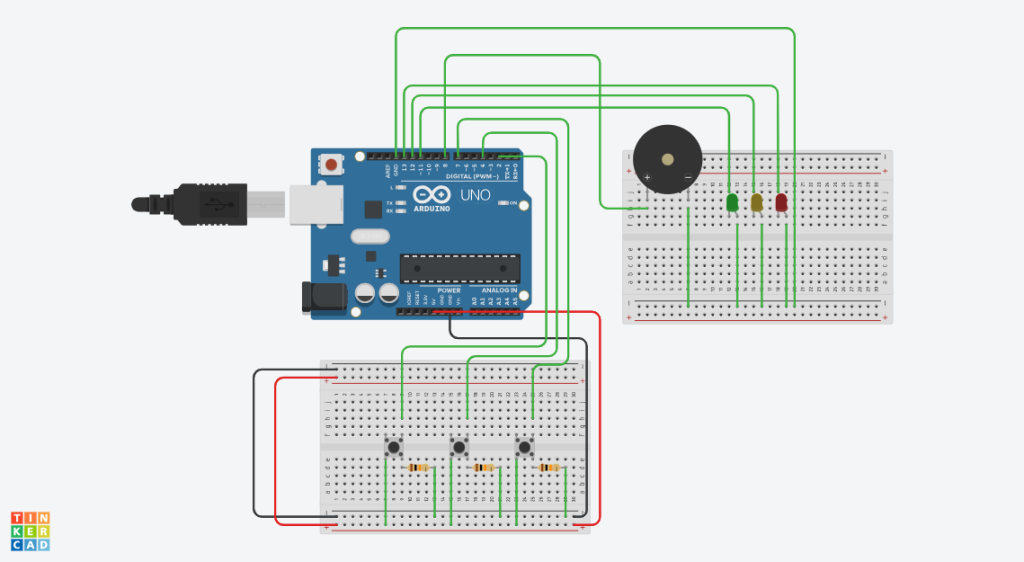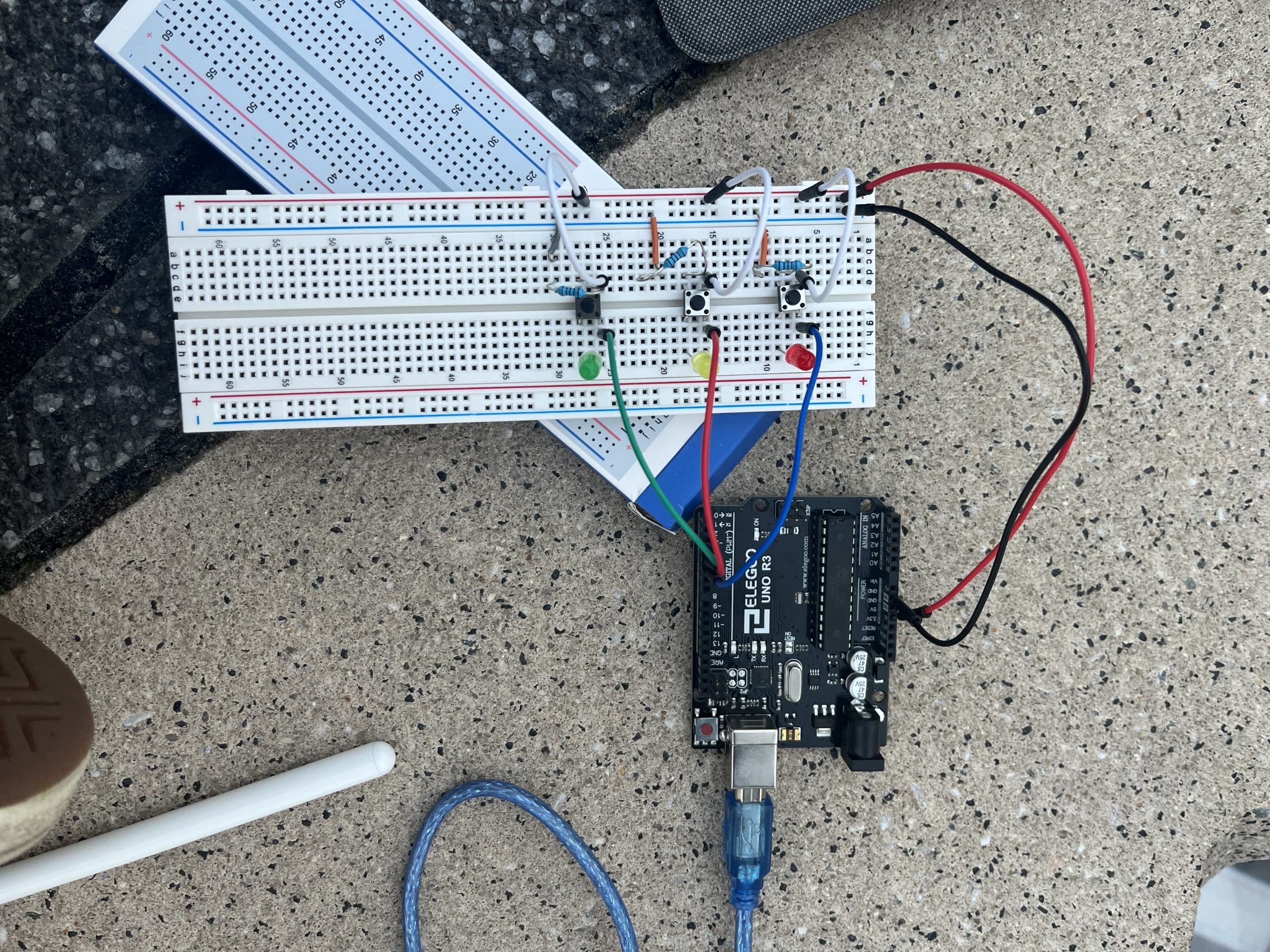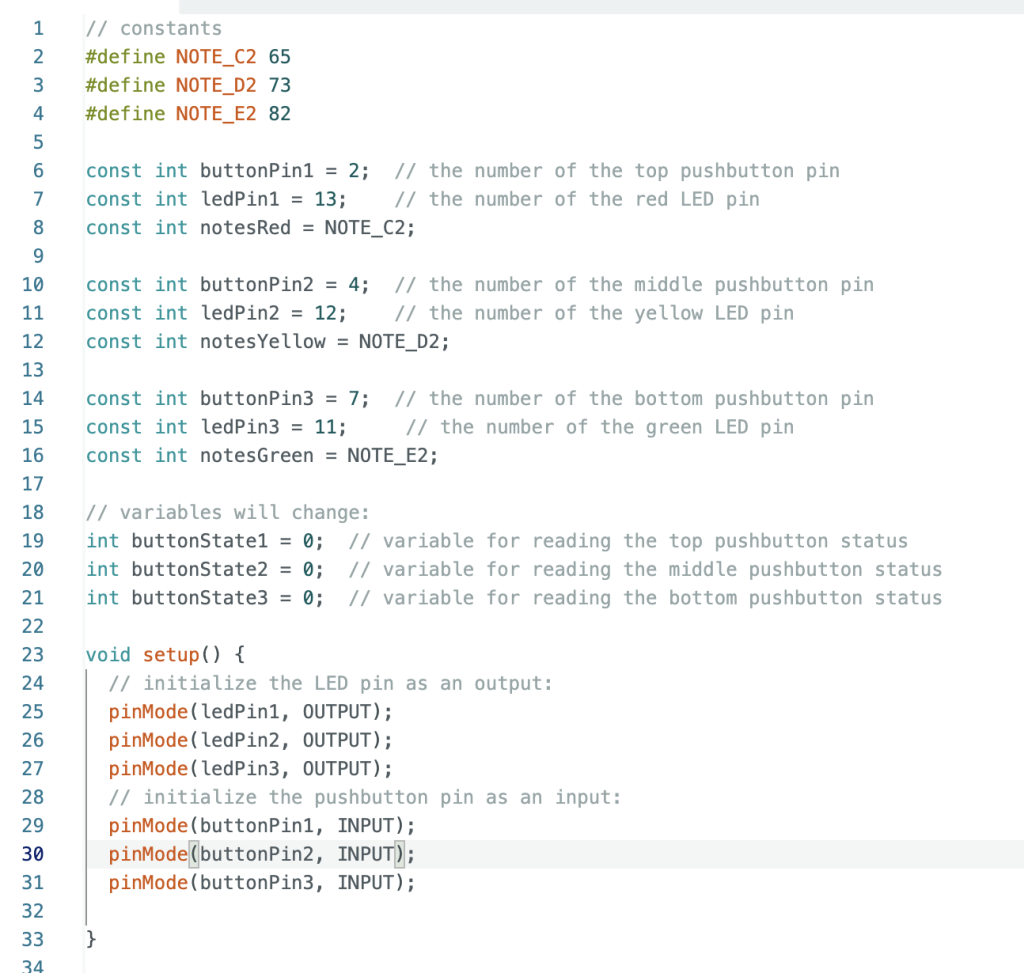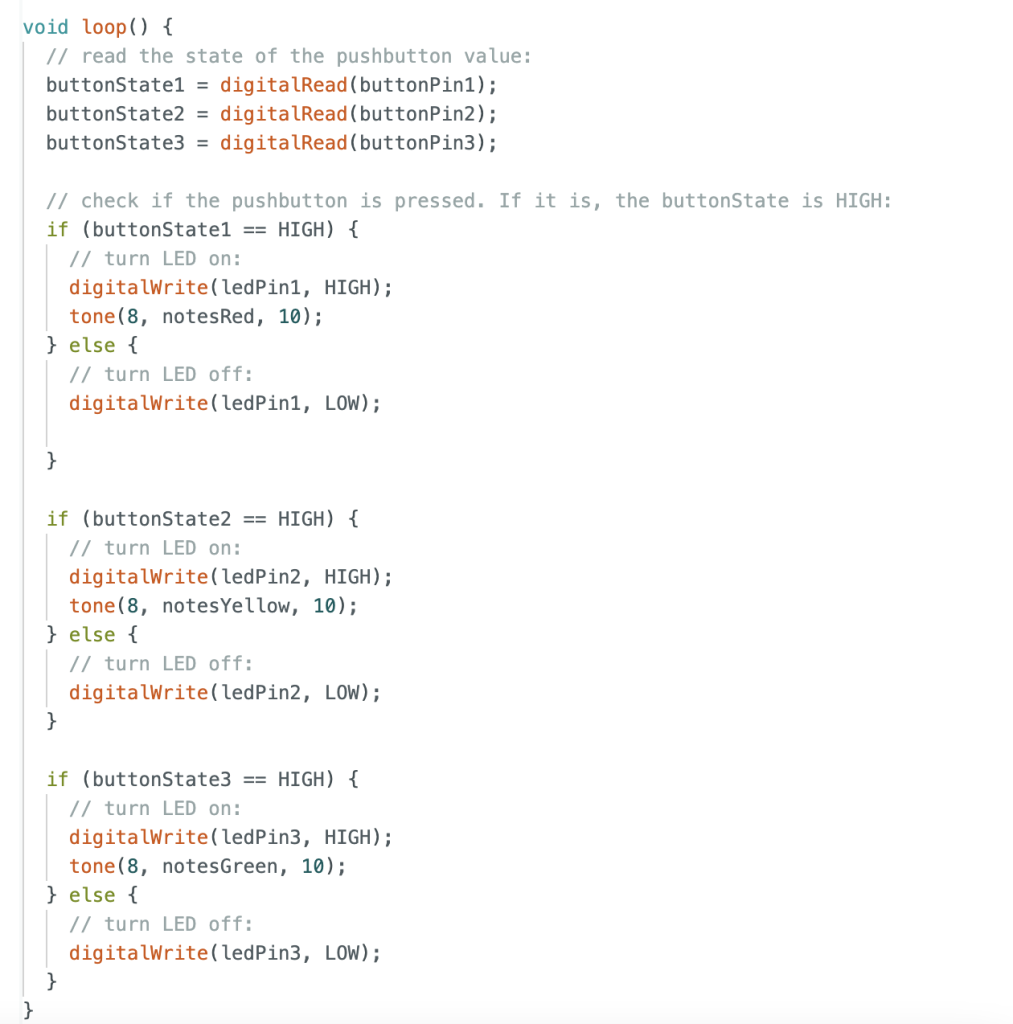I explored the ideas of combining different aspects of simple examples (ex. buttons, lights, sound) to make a little piano. I am a musician since birth, basically, and know how to play 7+ instruments, so of course, I had to make a little circuit one! This was also helpful because my group project will use a button to lock breaks so it would be easier to use. I used the button sensors, a passive buzzer, and lights to provide multi-sensory stimuli and make it interactive for people with different abilities.

In my first design, I worked on understanding the wiring (and since my computer was broken, it gave me something to brainstorm and visualize in the meantime) and started thinking about how the circuit would work, as well as the input/outputs.

In coding this, my thought process was, let me just make one button make one light light up first. Then, I wired it up so that there were 3 lights and 3 buttons, and each have a working input/output. Then, I had to figure out how to code for the buzzer and have it make a song. Then, the buzzer was isolated to have three separate notes, corresponding to a specific button each.


In this final design, I used a second breadboard to make the outputs separate so that in a future design, the breadboard part can be hidden and the lights and sound could be made in a way that would be easy to work with.
I found the wiring part the hardest part (and almost created several short circuits and only didn’t because I had a friend point it out before I connected it to power!). The set up with the computer was also another source of stress because of several technical errors, but I found the old fashion take everything apart, turn off, and re-download worked really well. I learned how to label different inputs and how to wire everything to ground while playing with the microcontroller, and feel like i understand the breadboard much better now, too. I learned that the left and right sides don’t naturally connect, and you need to bring the ground wire over. I didn’t use any data sheets to figure out wiring components, but did use the sources below for inspiration.
Some potential uses for the microcontrollers in my life is in creating humidity sensors to automatically turn off/on my humidifier and dehumidifier (cause while they have sensors of their own, the two aren’t connected). Furthermore, when thinking about medical devices in prosthetics, robotic and sensing parts would be very cool to integrate into my future designs.